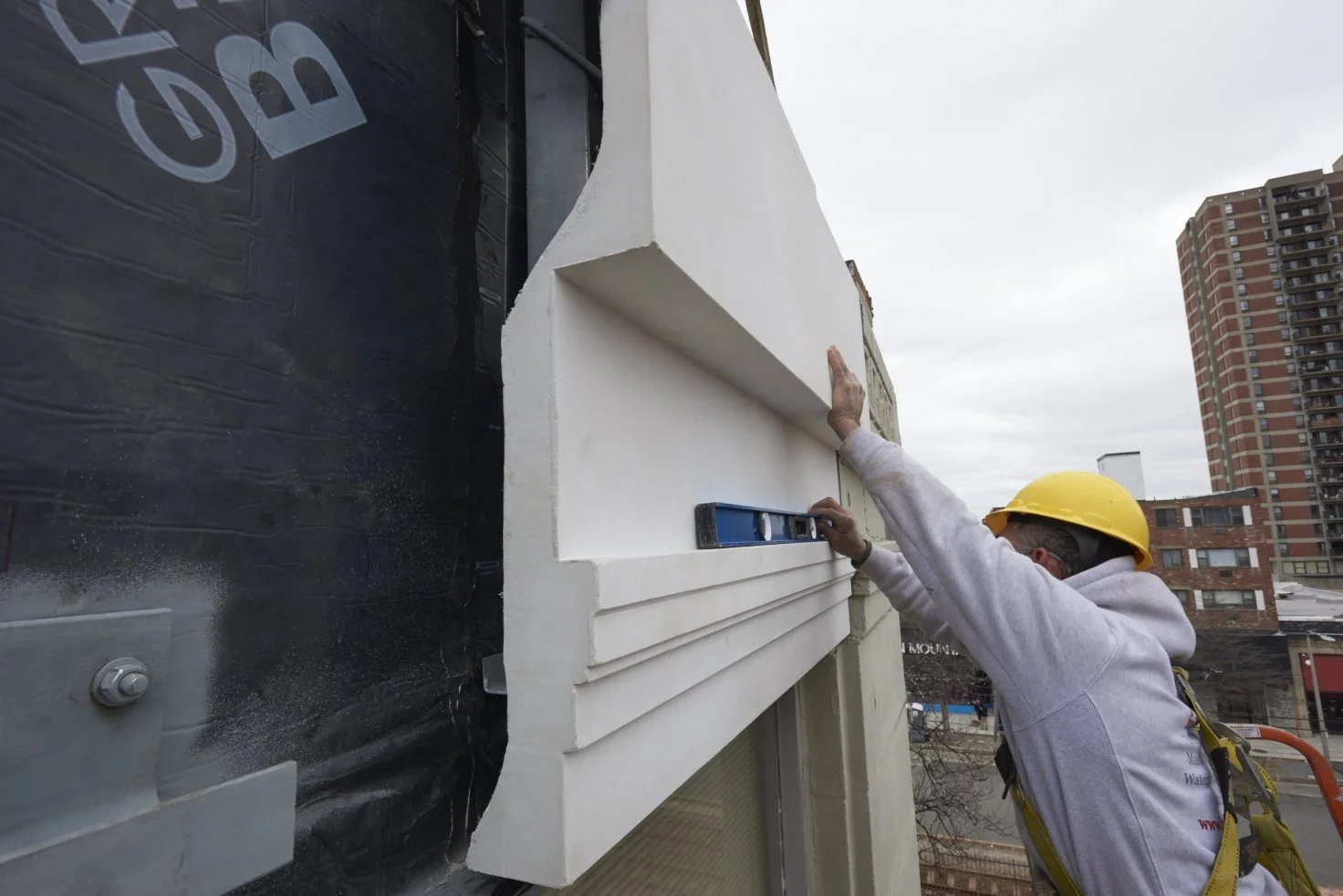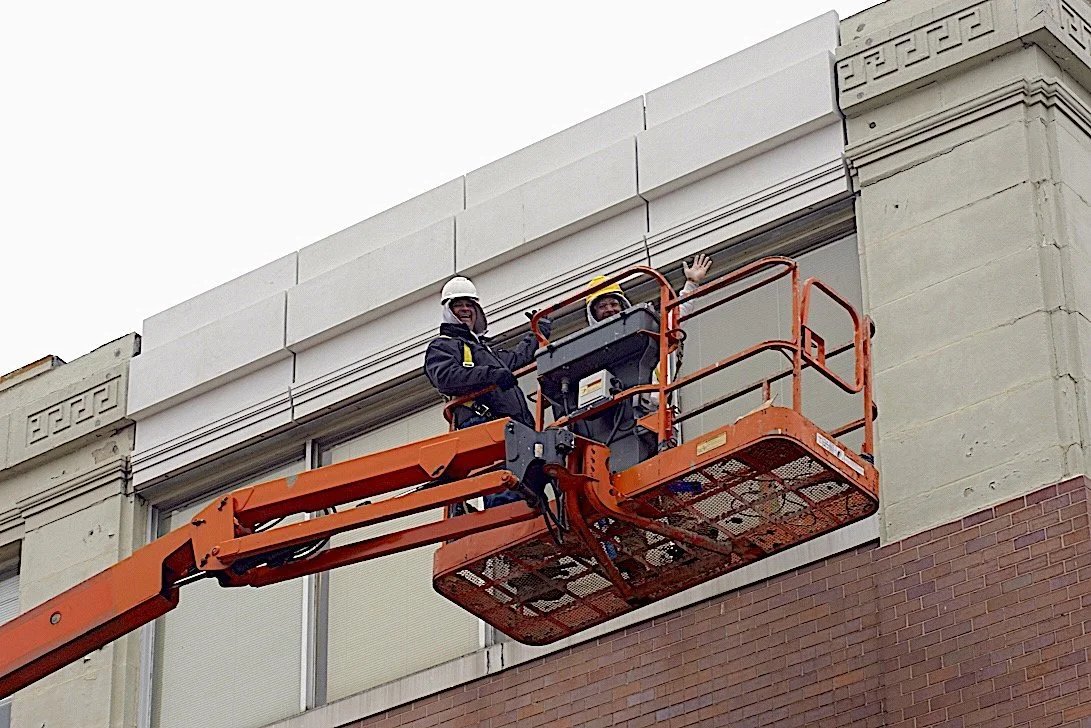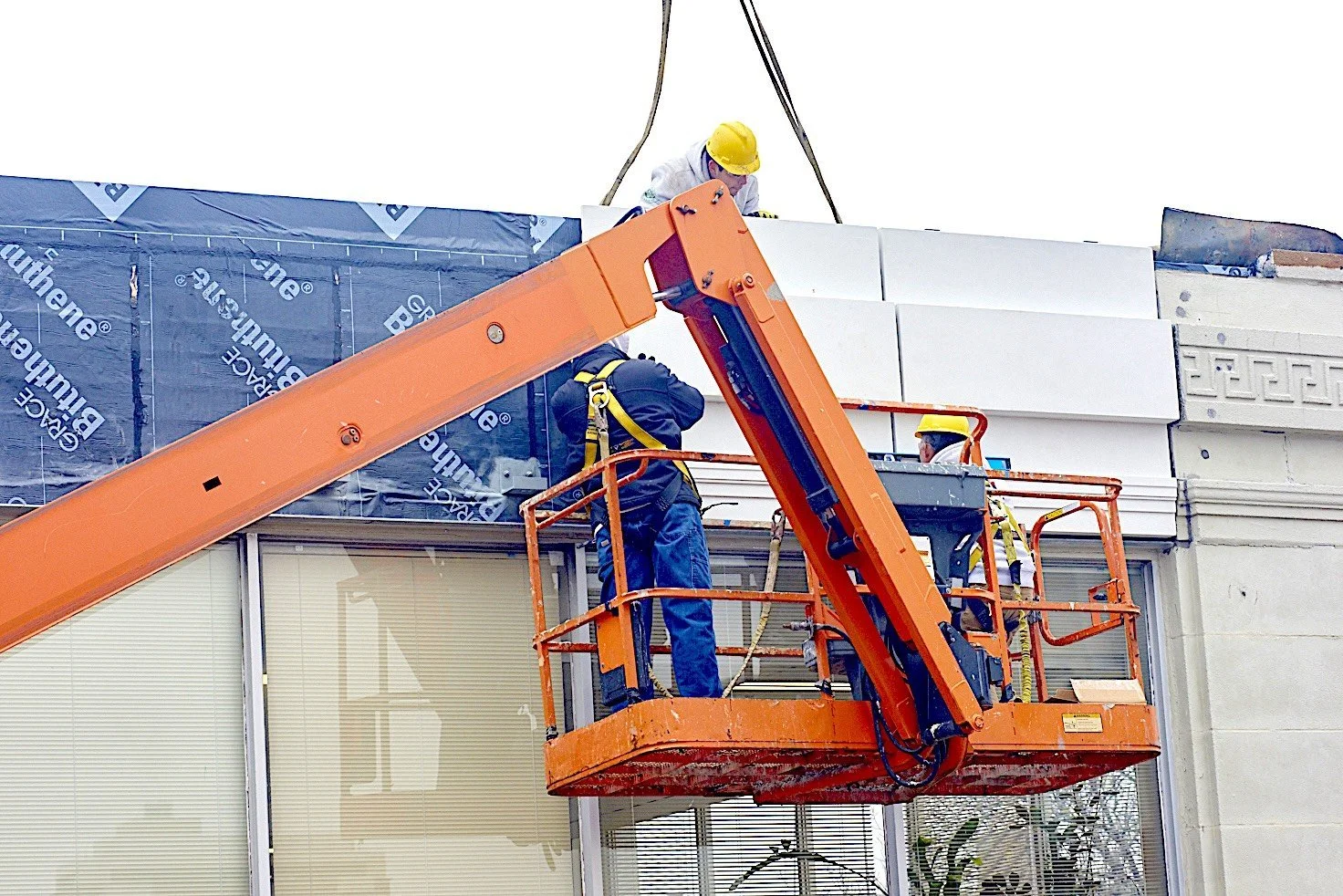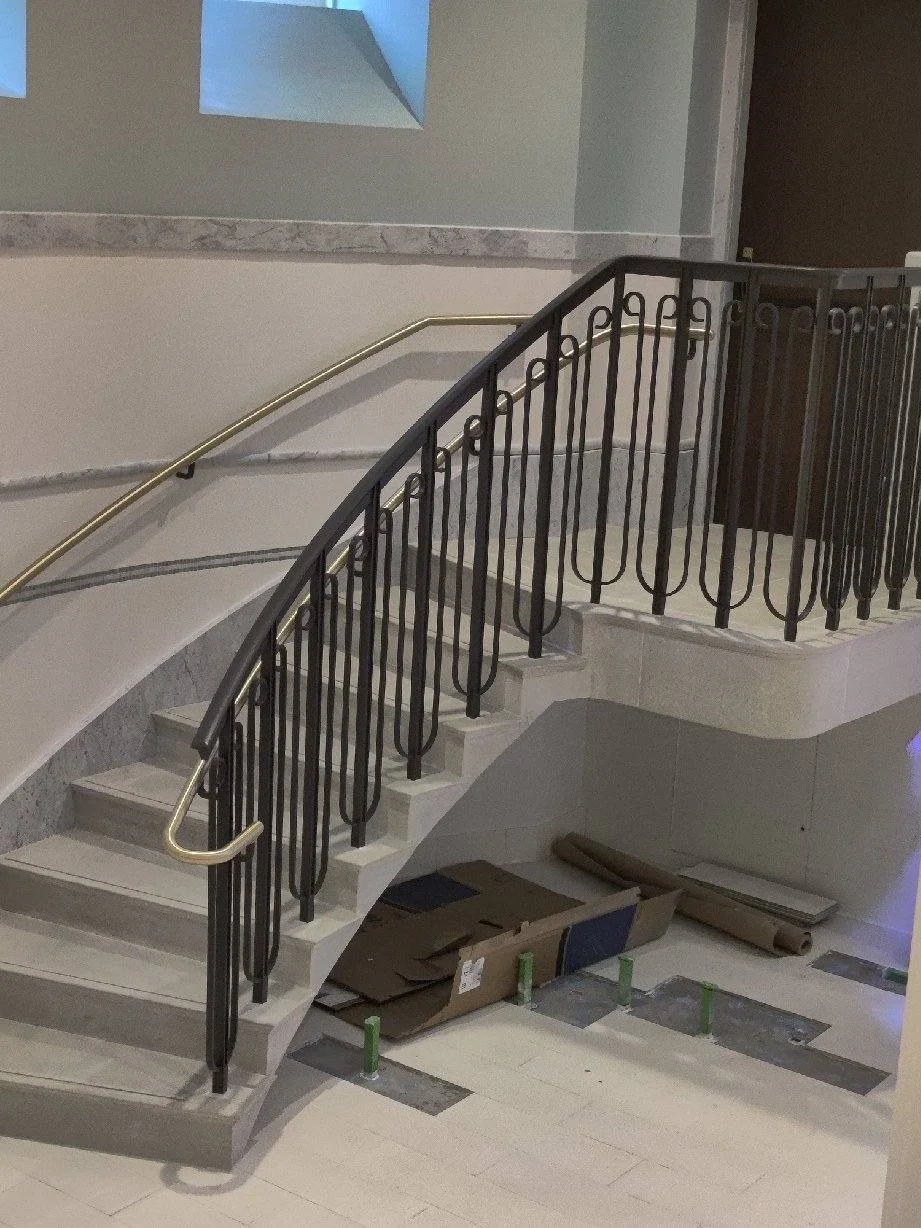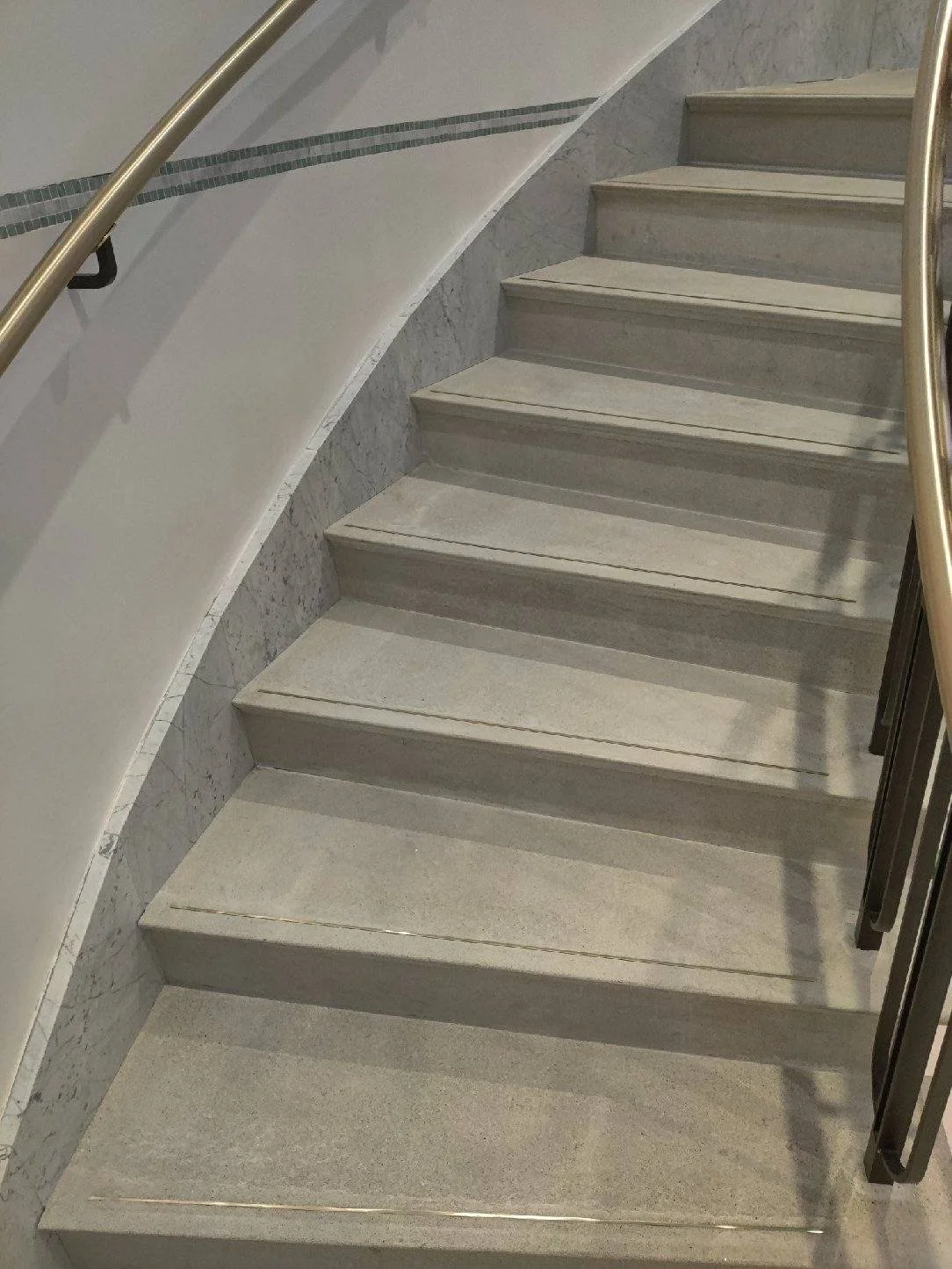
121 High Street
This 121 High Street restoration project required FORMA to custom design and manufacture a series of precision molds to capture the complex details of the old and worn-out cornice and dentals on this historic Boston financial district building. The pieces were replicated with our GFRC formulation sprayed over steel frames used to securely fasten the new elements to the building and to improve this lifespan. Waterproofing was also addressed to further extend the life of the building.
Commonwealth Ave
FORMA Beyond performed a variety of maintenance projects on this building including the custom design, manufacture and installation of new GFRC cornices that replicated the originals. The new-age cornices include integral, high-strength steel frames designed to extend their life.
Bridgewater Academy
FORMA Beyond replicated the exterior columns and capitals and interior ceiling medallions for the restoration of this 1868 Italianate- and Georgian-Revival-styled town hall. Contractor: M. O'Connor, Architect: Tappé Architects, Preservation Consultant: JMBA Architects, Artist Justin Blanchard/FORMA Beyond.
Harvard university stair Treads
Our team carefully created molds of the original structure to ensure an accurate replication. Each step was crafted with precision, preserving the stairs' original design and character while enhancing their durability. This restoration not only honors the architectural heritage of Harvard but also ensures that these iconic stairs can be enjoyed for generations to come.
540 Commonwealth Ave
Our handheld digital scanner allows us to create full 3D CAD models and accurately manufacture replacement elements such as for this historic lintel. Whether you are looking to preserve, restore or replicate old-world forms, digital scanning produces the most accurate results.
FORMA provides complete onsite digital scanning capabilities to create replications of historical elements without having to remove the original from the structure. The hand-held digital scanner produces a full 3D CAD model and allows broken or missing details to be digitally added to complete the original shape. The model is then used to generate CNC cutter paths to cut the stone/granite or create molds for GFRC, GFRG, or Composite Polyurea replications. This process saves time and money and produces a highly accurate replication of the original elements.







